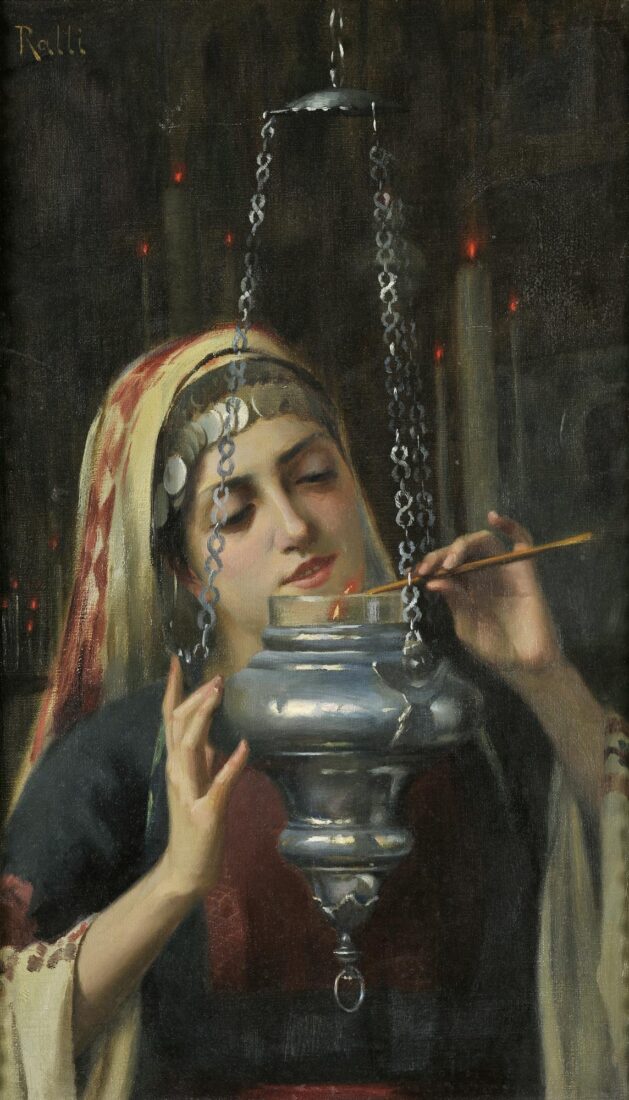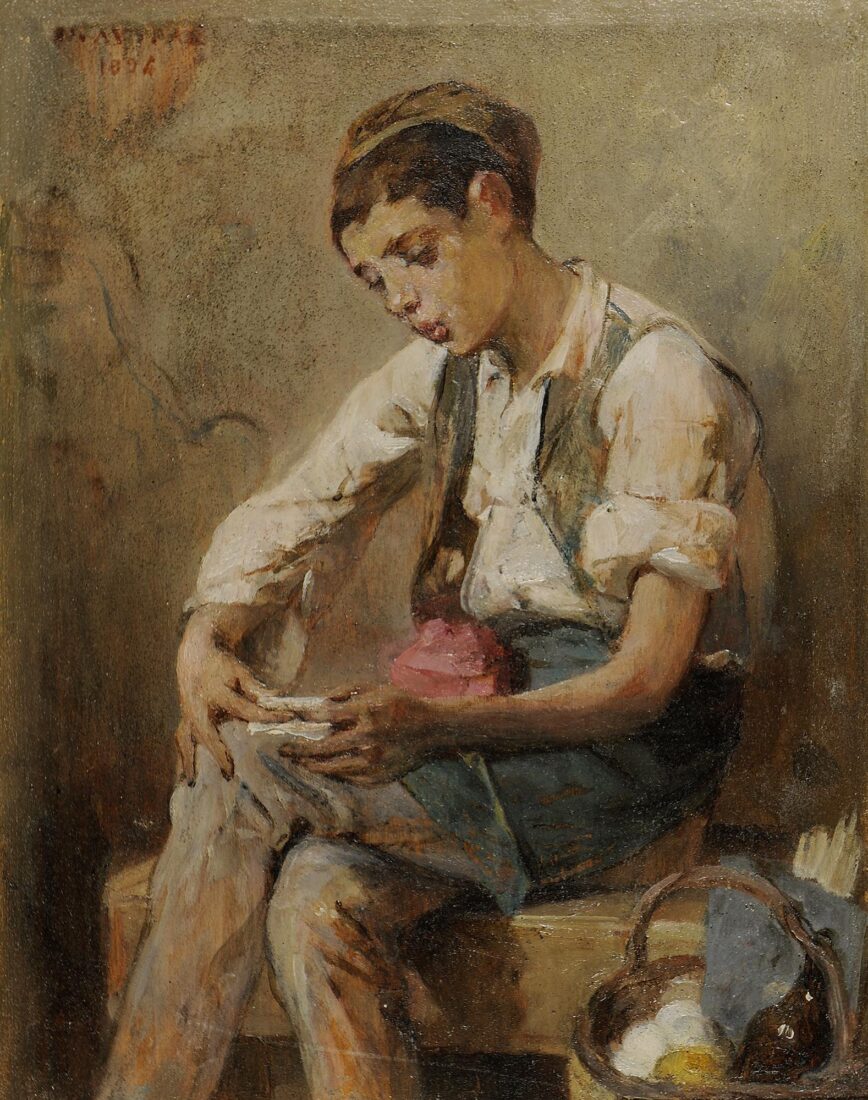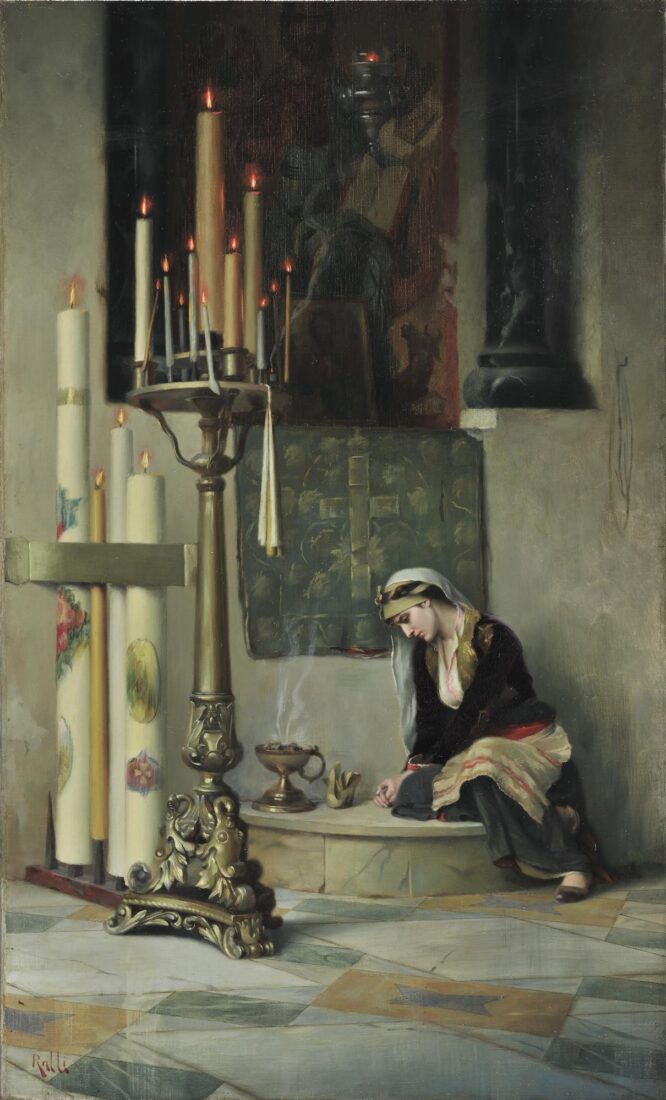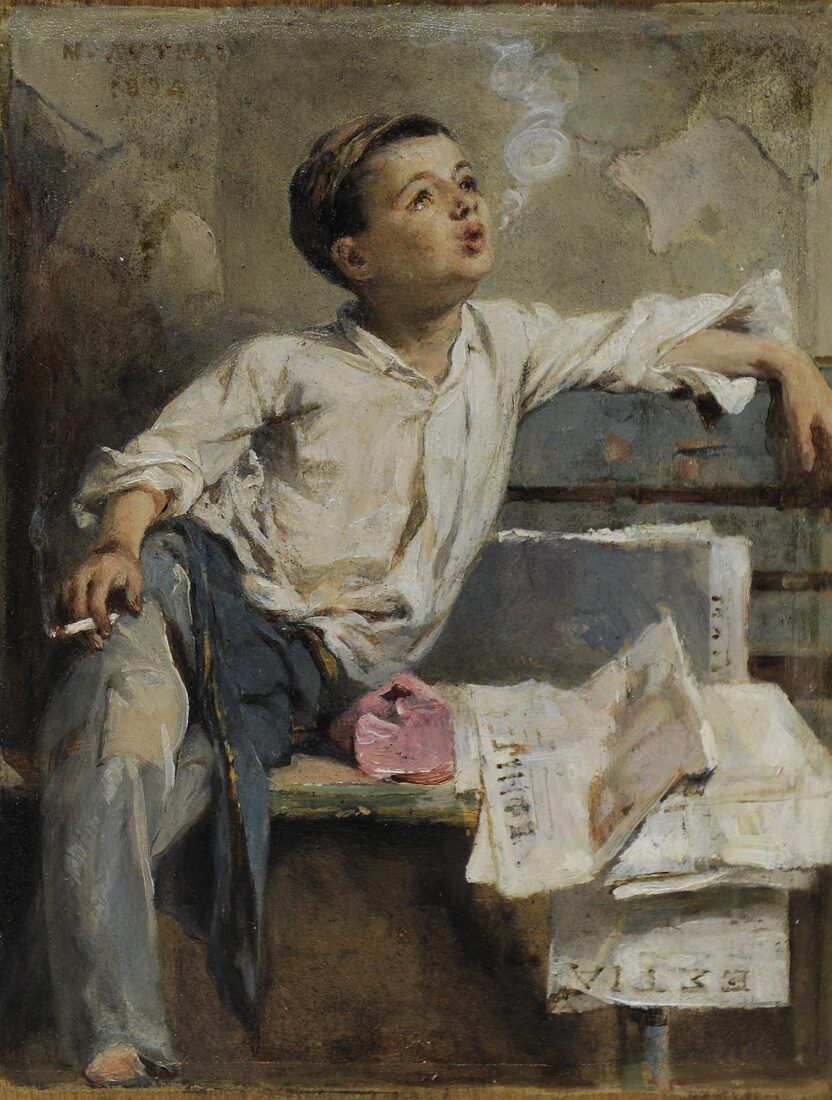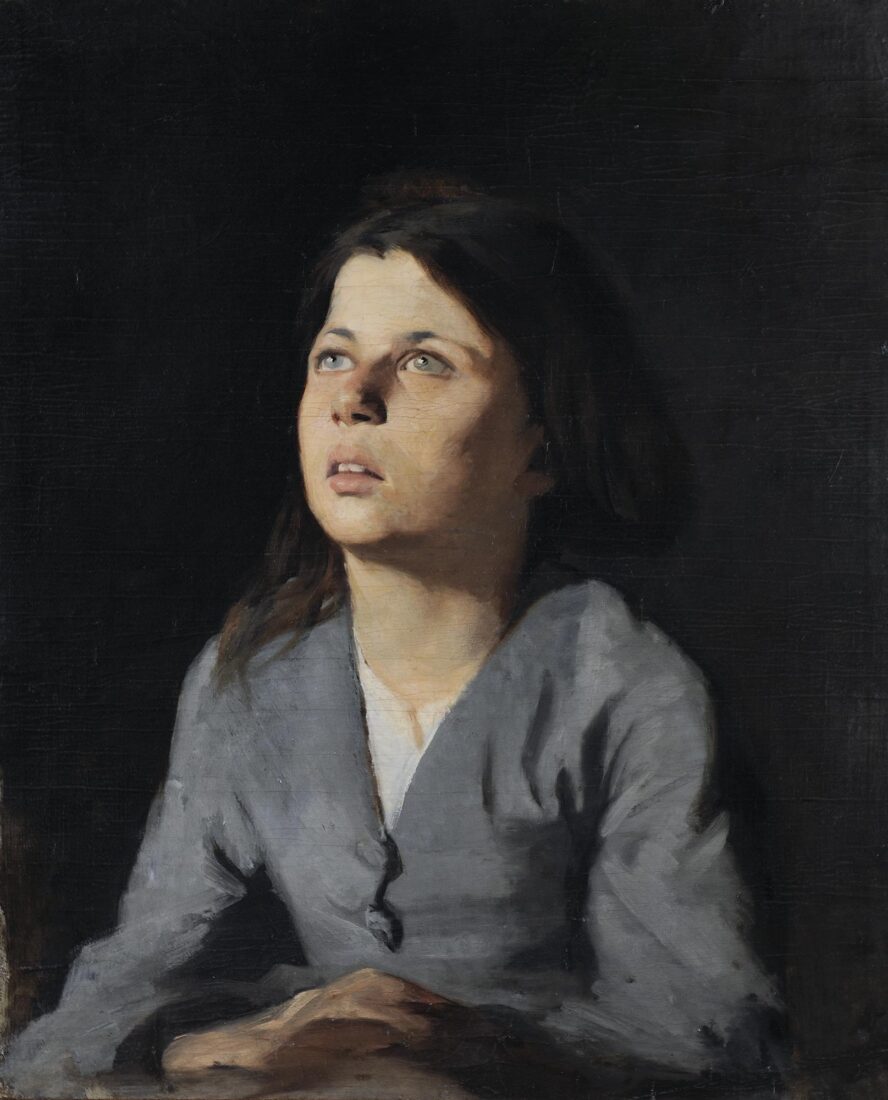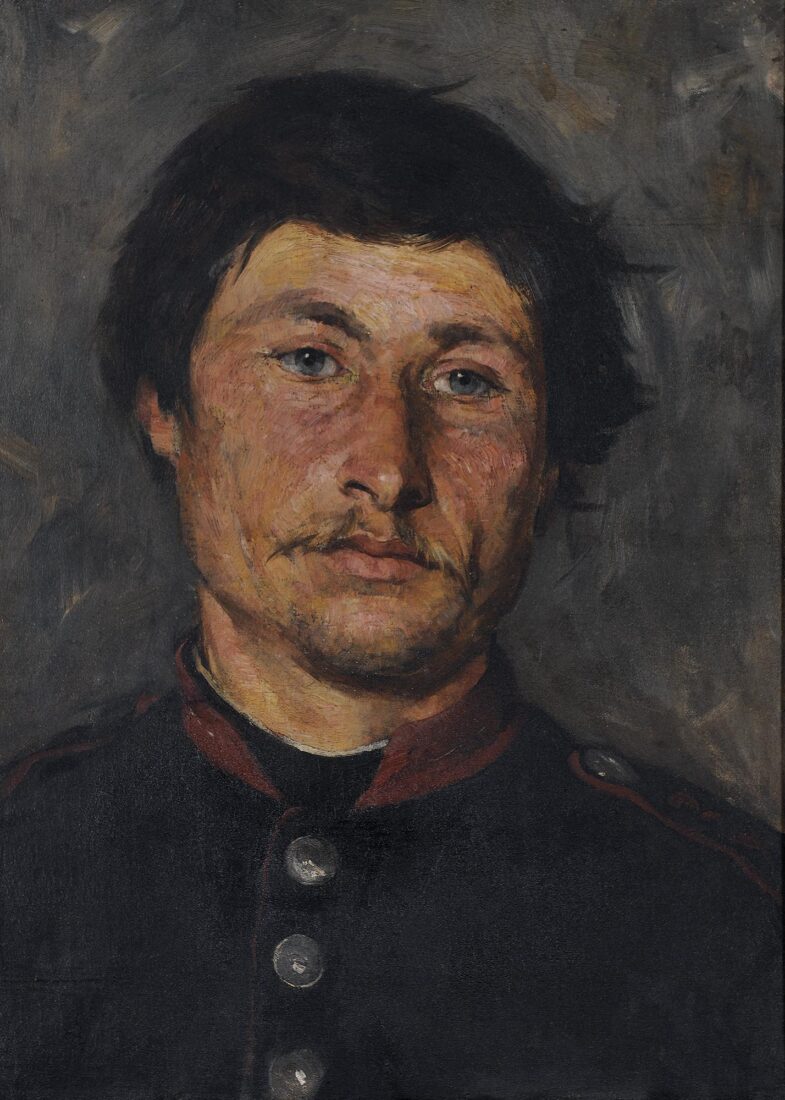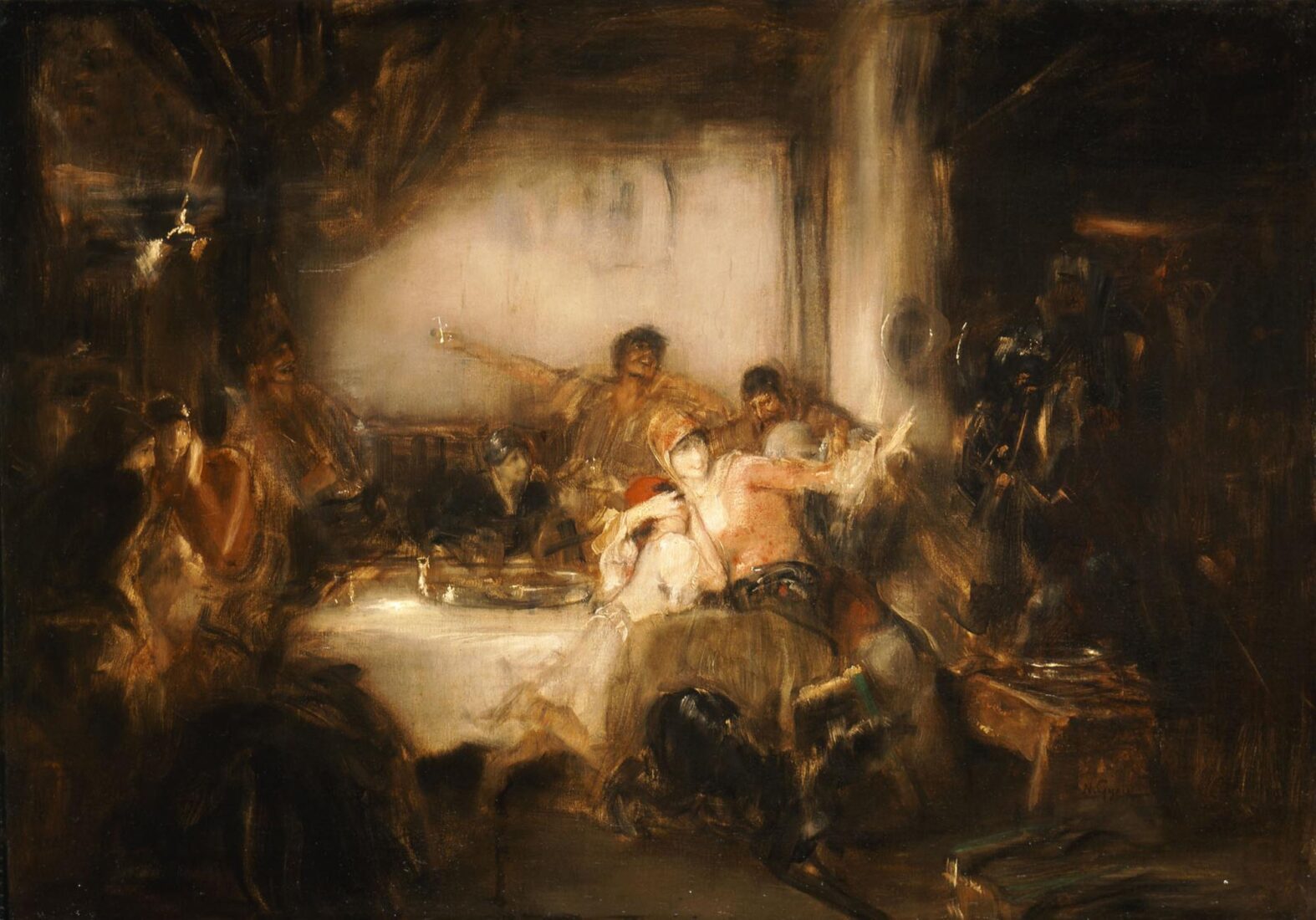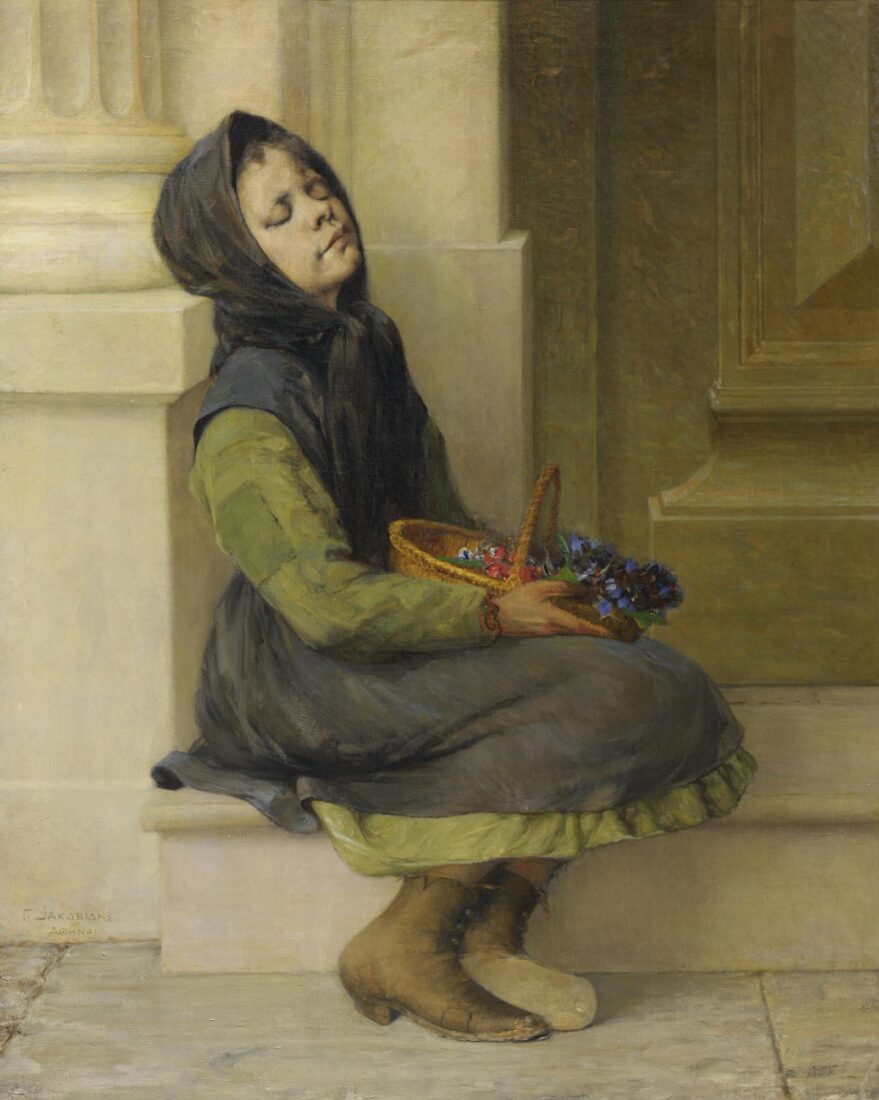

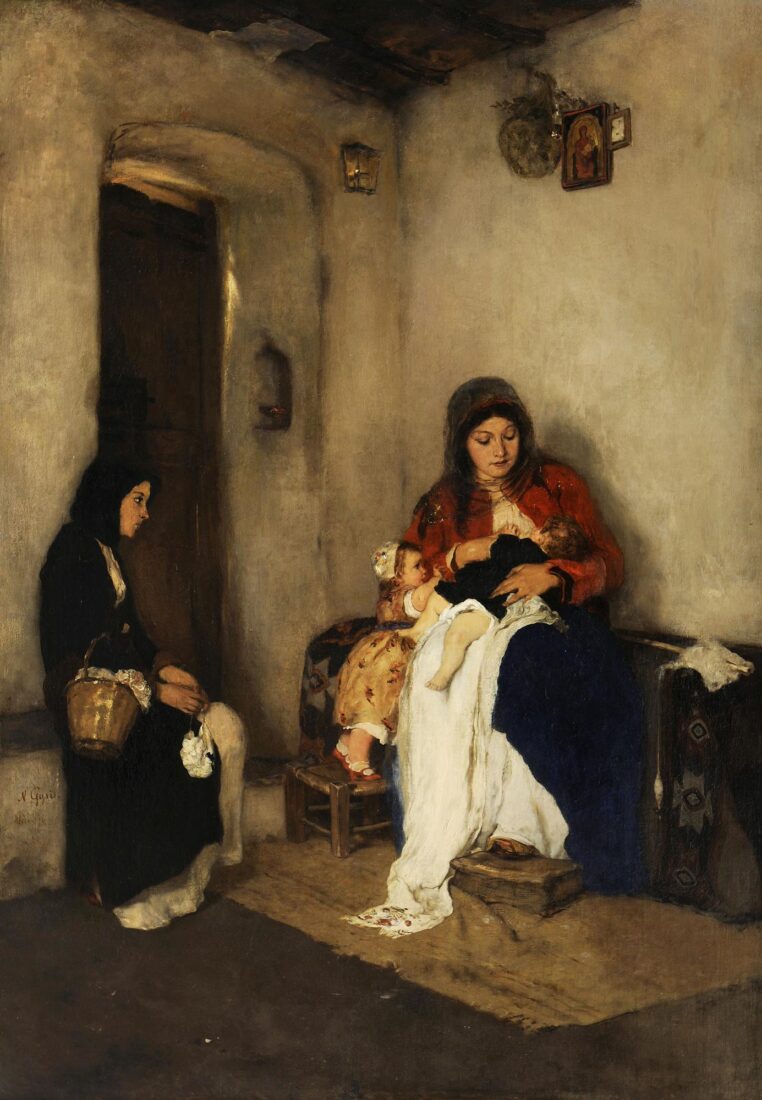
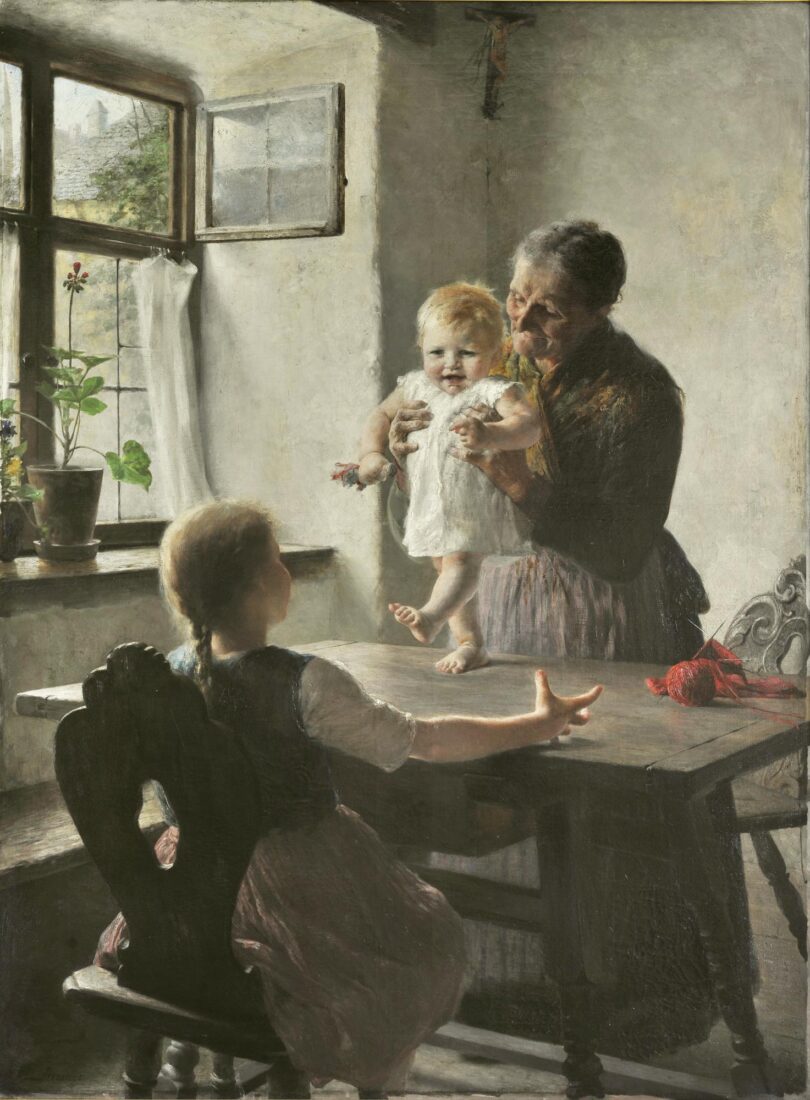
“The First Steps” is one of Iakovidis’ best-known and loved works. The scene is set in a Bavarian village home interior, bathed in the light pouring through the open window. Dressed in dark cherry tones, the grandmother is holding the blond baby, full of courage and smiling, taking its first steps in the world, on top of a wooden table. The grandmother has left her red knitwear in a corner. Note this dash of red colour in Iakovidis’ works; we have also seen it in his teacher, Nikephoros Lytras’ paintings. The baby’s elder sister, seated with her back towards the foreground, is waiting to receive the baby with her arms open in a protective gesture. Note also the effect of the light on figures: All white and blond, the baby is dazzling. It thus becomes the symbol of emerging new life. The incoming light, on the contrary, illuminates the girl’s outline, lining it with a bright aura. The work exudes life and elan vital.
First shown at the Glaspalast exhibition in Munich in 1892, this painting marks a key change in Iakovidis’ work regarding his interpretation of light. The natural light floods the scene as it comes through the window, adding vibrancy and ambiance.
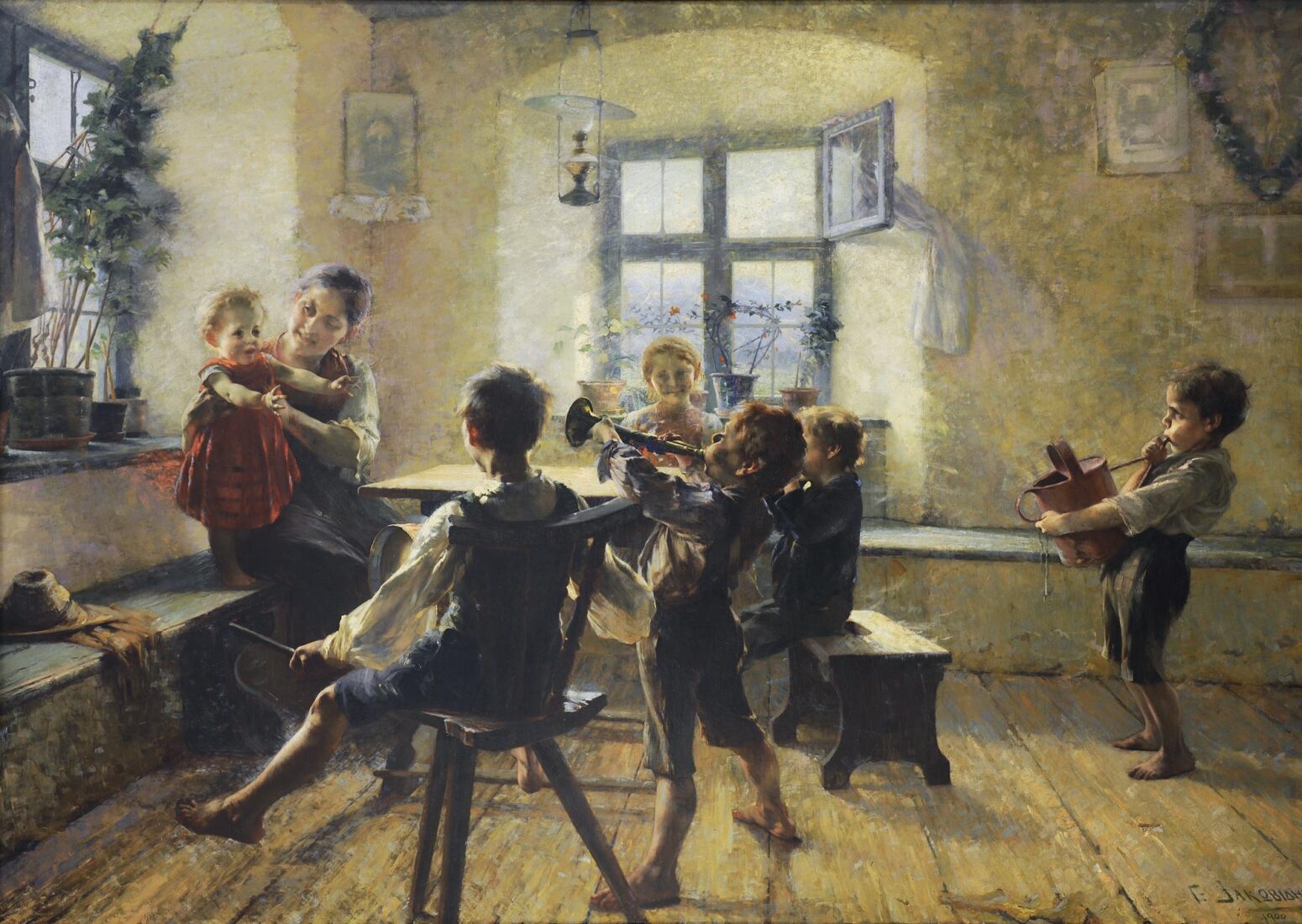
The “Children’s Concert” is one of Jakovides’ boldest works with respect to technique and lighting. The merry scene is set in the bright interior of a Bavarian village home, lit up by two windows, one on the left and one in the centre. These windows doubly illuminate the scene, and the light entering in two opposite directions poses a problem, which the artist resolves masterfully as we shall see. But let us first meet the characters: the four young musicians. The first one, seated, is playing the drum, the second is straining in order to blow into the trumpet, the third one, half-hidden, is probably playing the harmonica, and the fourth one, standing further on the side, in lack of a proper instrument, is blowing hard into a bright red watering bucket. All the children are barefoot. Which is the audience of this children’s concert? The mother, seated on the left, close to the window, but mainly the little sister, her arms extended towards the musicians. Another older sister is seated in front of the main window, full of flowers. The painter is “watching” the scene from above, which is why the floor boards have been drawn in perspective.
The protagonists in this musical, vibrant feast, are light and colour. The entire scene is bathed in orange hues, which become even bolder as the painter places their complementary colour, blue, adjacent to them. The light comes from two opposite directions, making the volumes of the children dark and heavy, whereas the outlines are intensely illuminated. Thus, the first boy’s shirt becomes almost transparent. The face of the elder girl has “melted” into the light. Here, Iakovidis pushes his art to the extreme, in other words, Impressionism.
This work has been painted in two versions. The earlier one was first shown in 1896, during the first Olympic Games in Athens. Its colours were on the cool, grey side, as Emmanouil Roidis remarked. Iakovidis repeated the painting in order to send it to the 1900 Paris World Fair, where it earned a prize. This brighter version is the one we are now able to enjoy at the National Gallery.
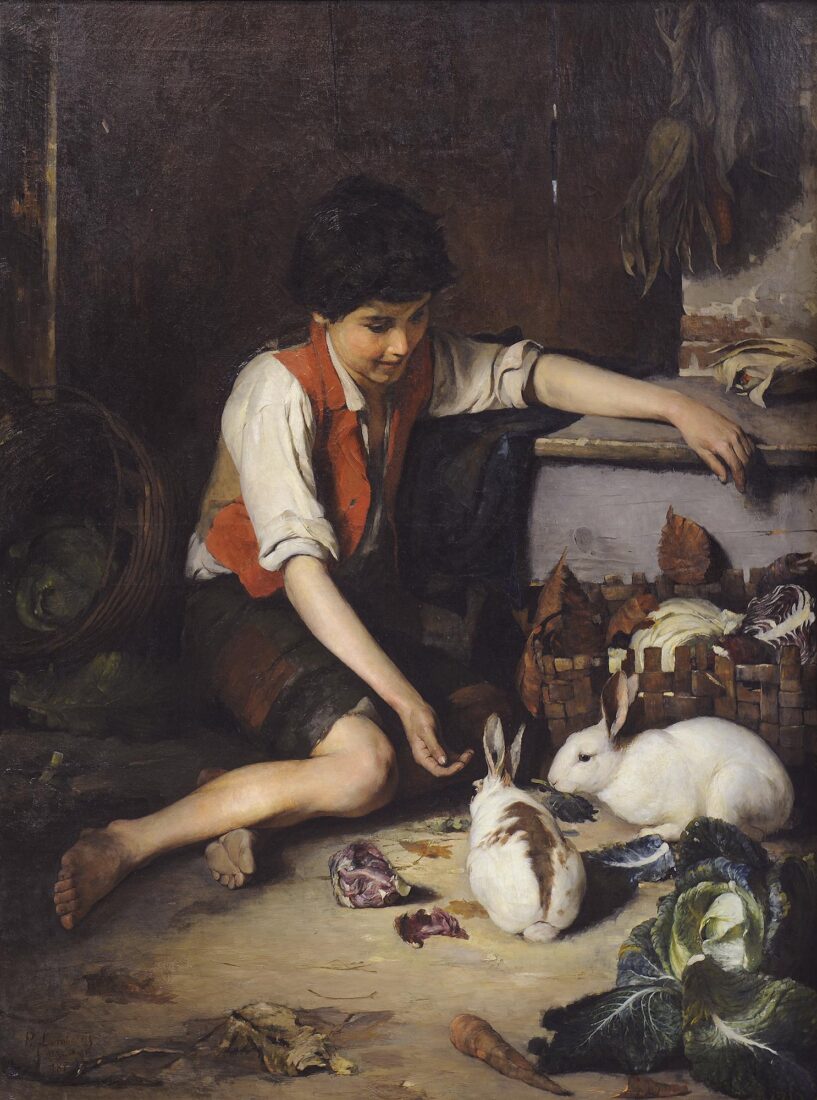
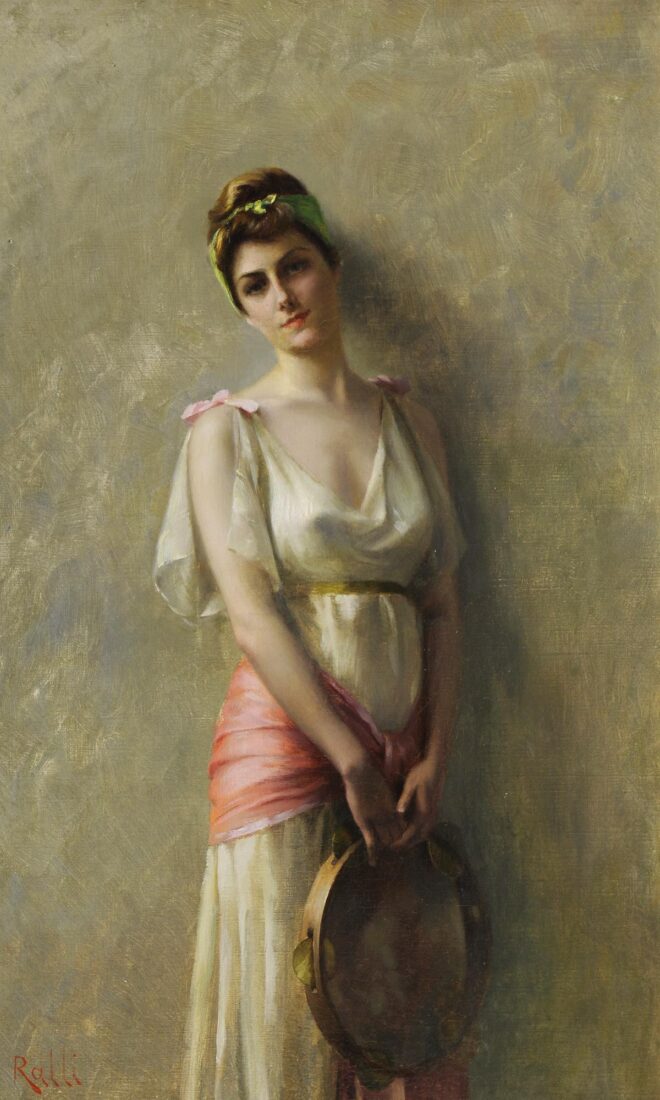
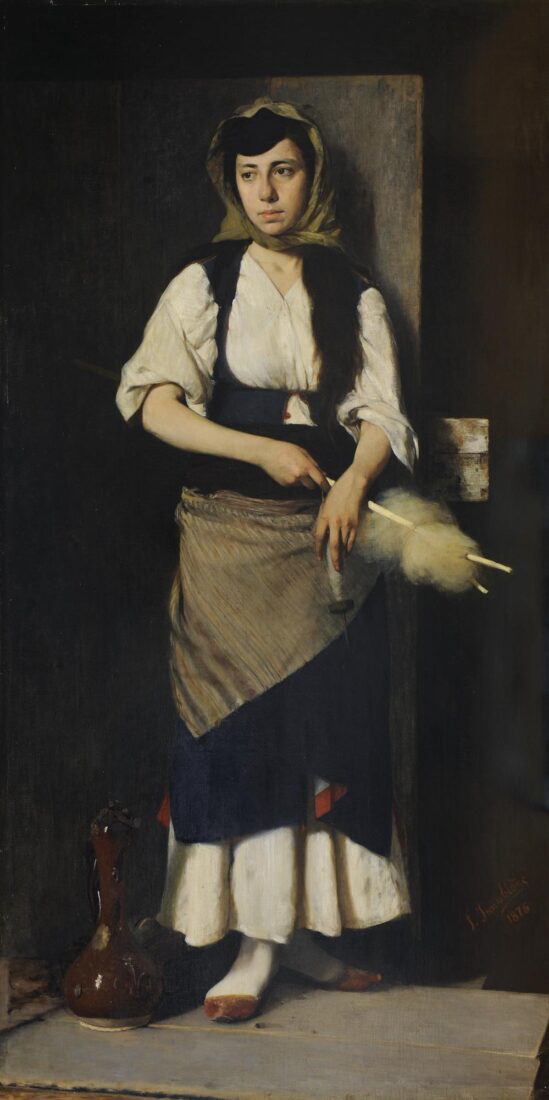
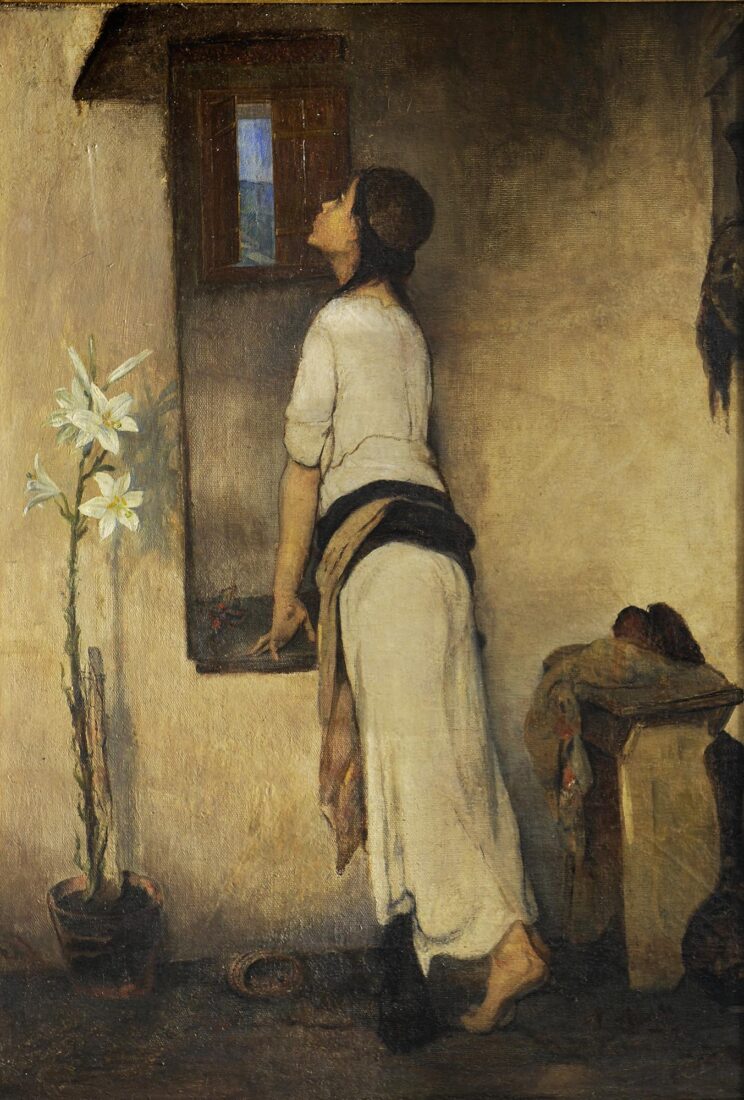
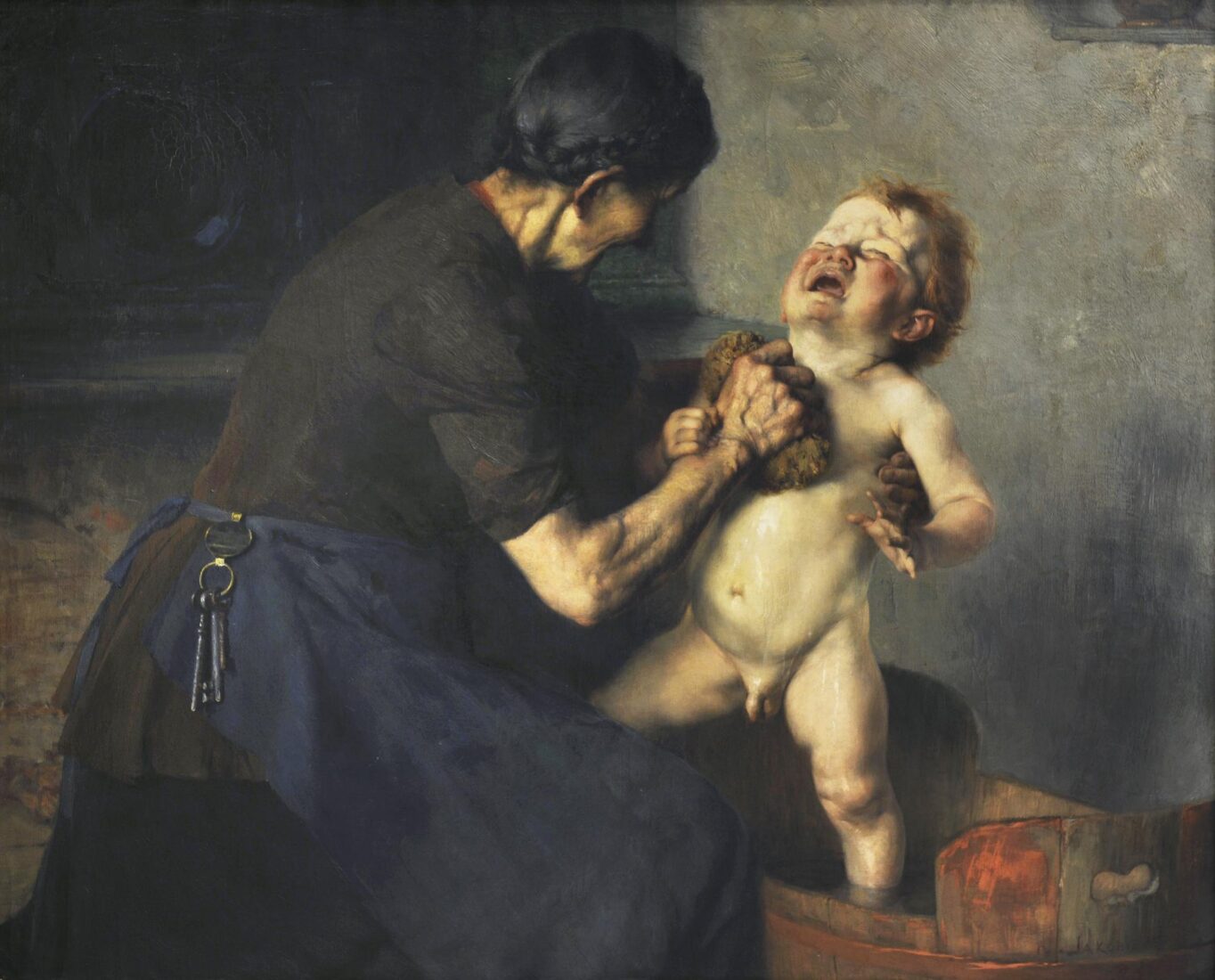
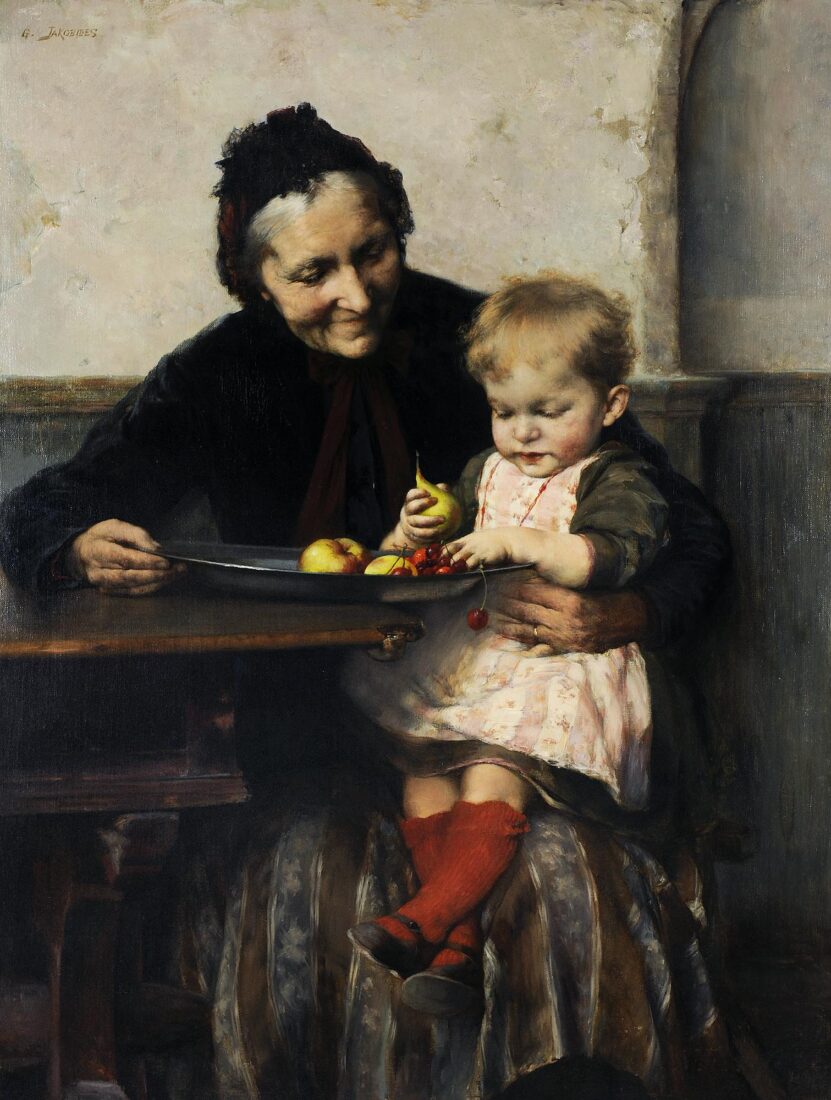
Iakovidis is the last great exponent of the Munich School. Although he distinguished himself in many genres (genre painting, portraiture, still life), he was mainly known and loved by the people as a painter of childhood. Most of his works on this theme were painted in Munich, where he lived from 1877 to 1900, when he was invited to return to Greece and become the director of the National Gallery, which had only recently been established. Iakovidis inimitably captured the relation of the elderly, grandfathers and mothers, with their grandchildren.
This work features a dark-clad goodly grandmother, holding a cute blonde little girl in her lap; the child is wearing a white flowery apron and red socks. The bronze fruit plate has captured her attention — a great opportunity for the artist to create a wonderful still life. The scene unfolds against a white wall, contrasting sharply to the dark-coloured main subject. Everything has been painted with an extraordinary knowledge of drawing, colour, light as well as profound insight into the psychology of the relation between the two ages.
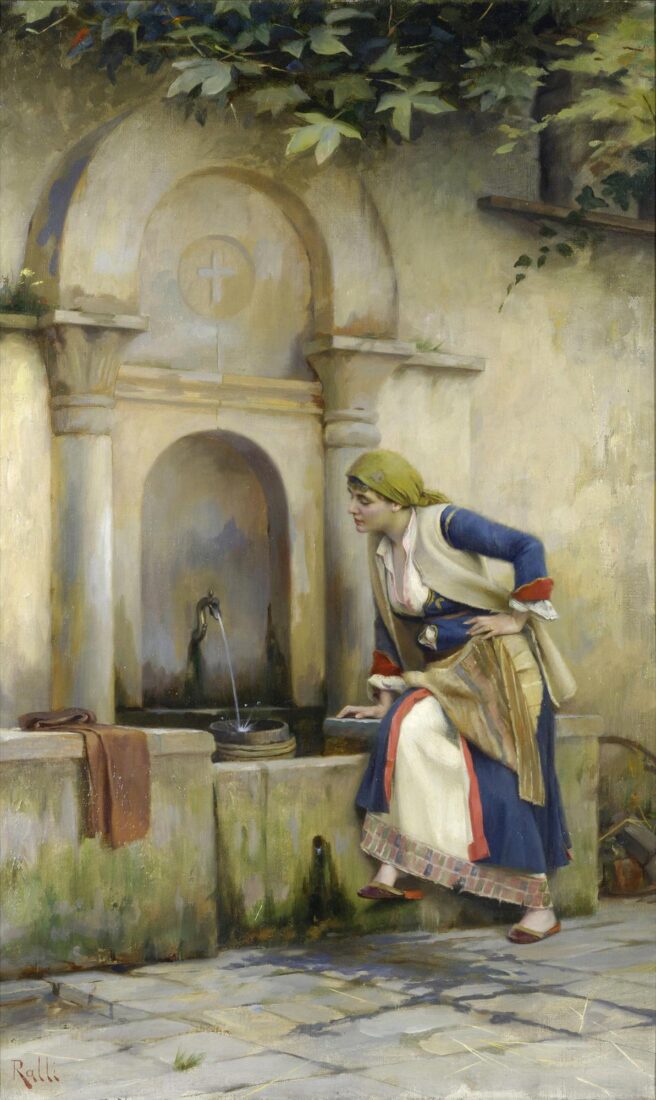
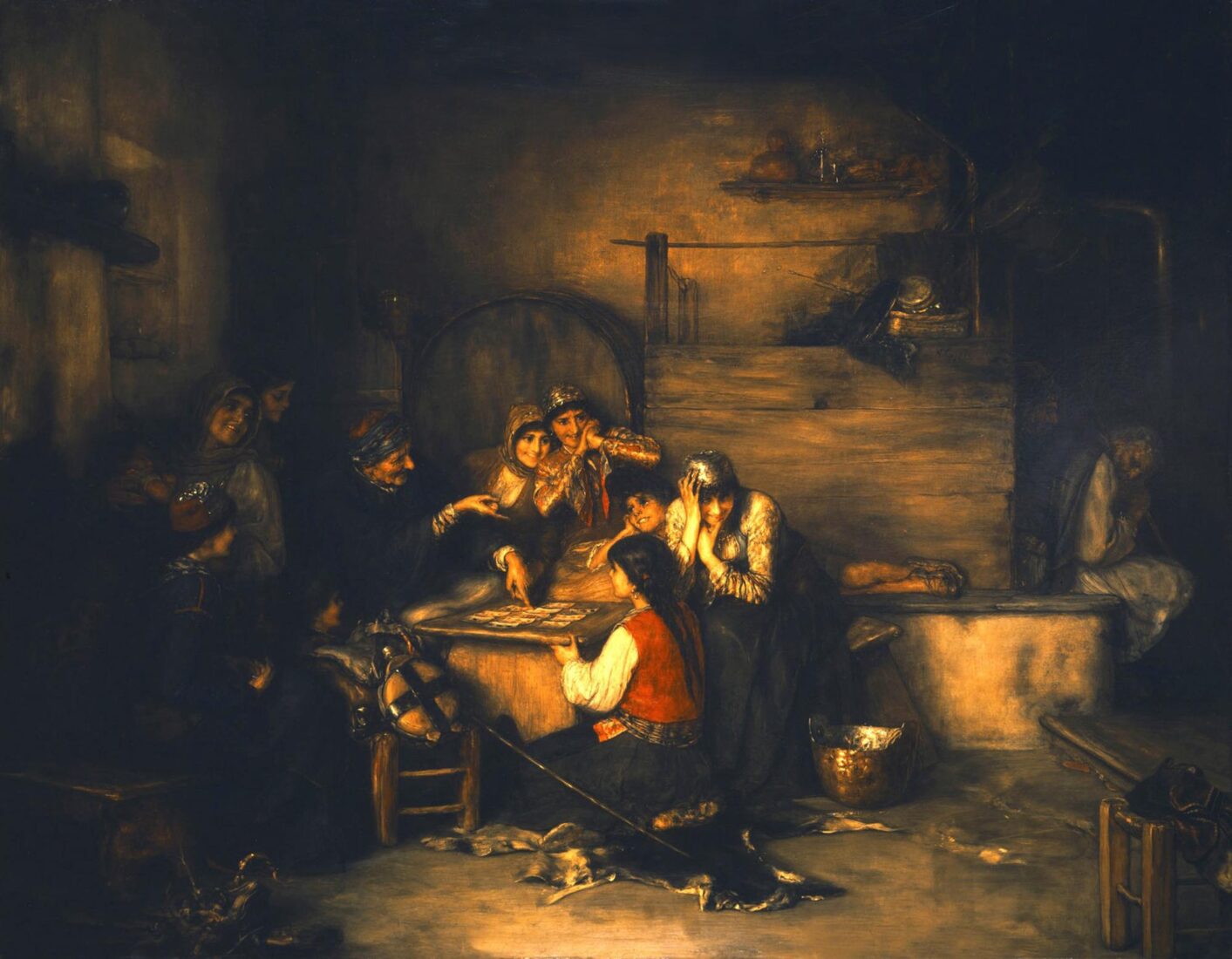
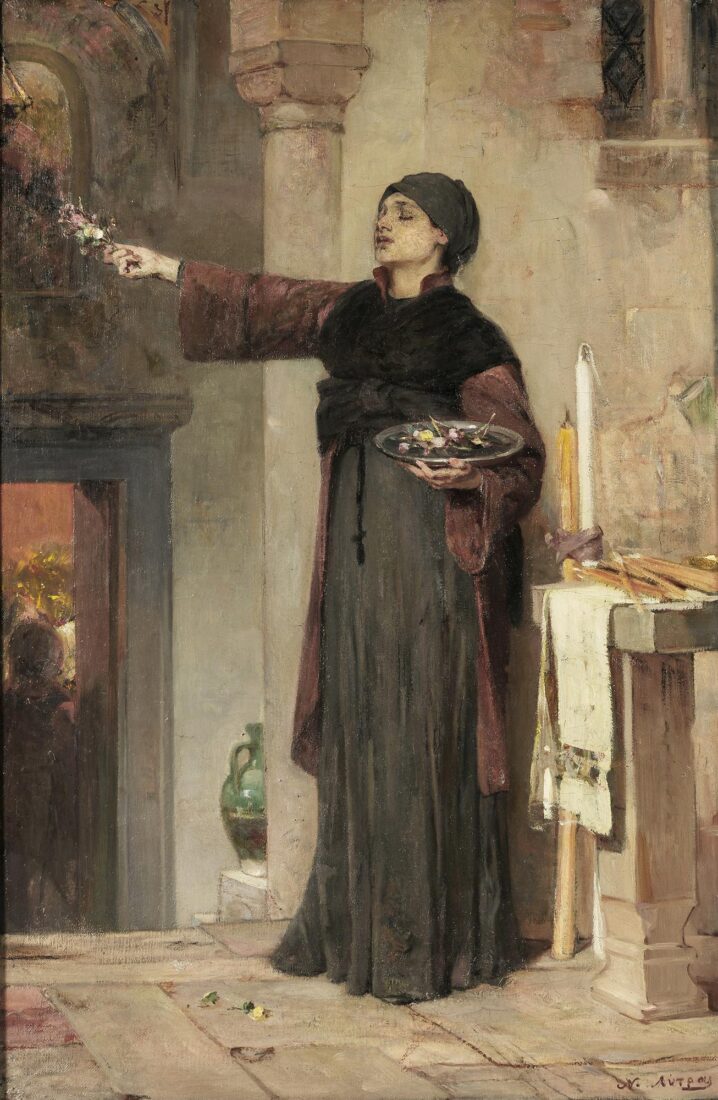
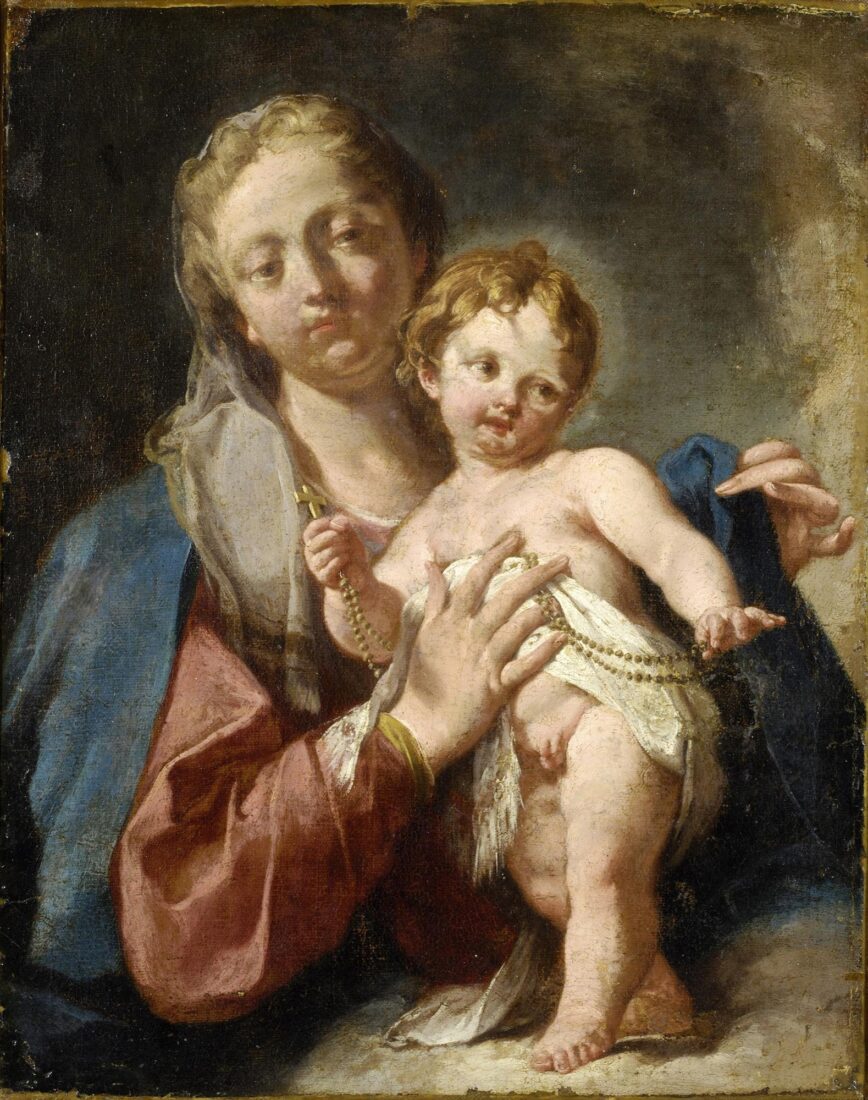
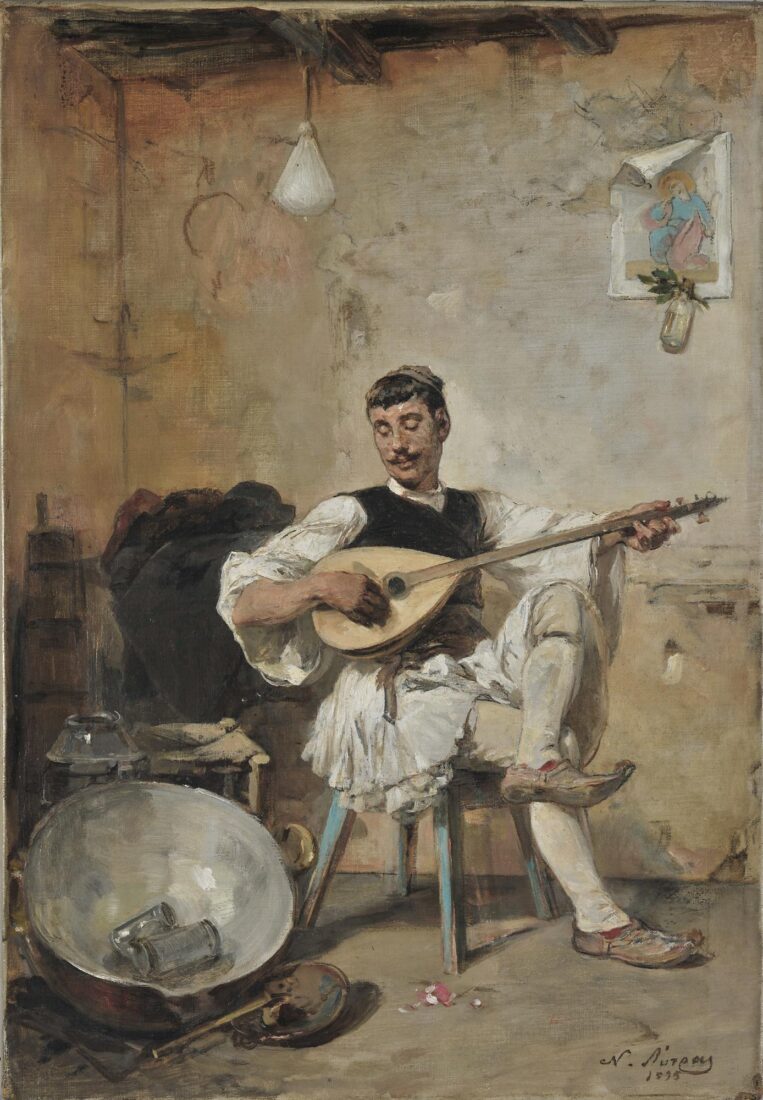
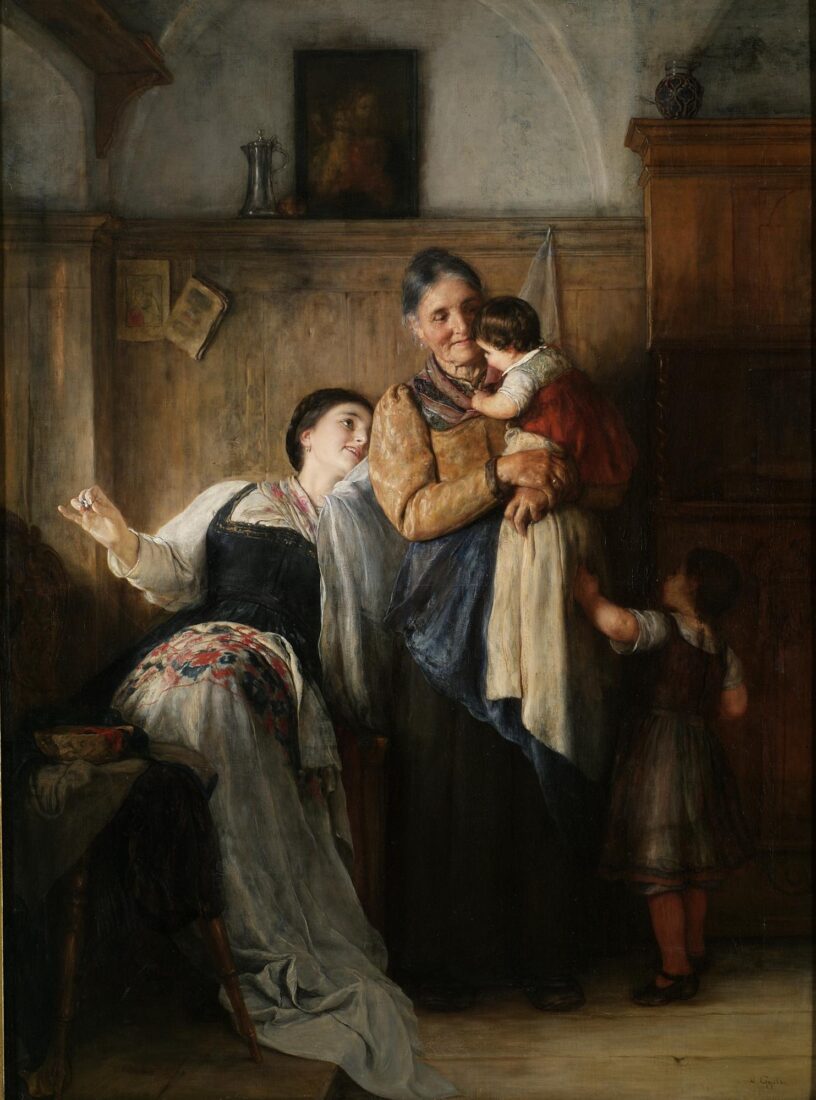
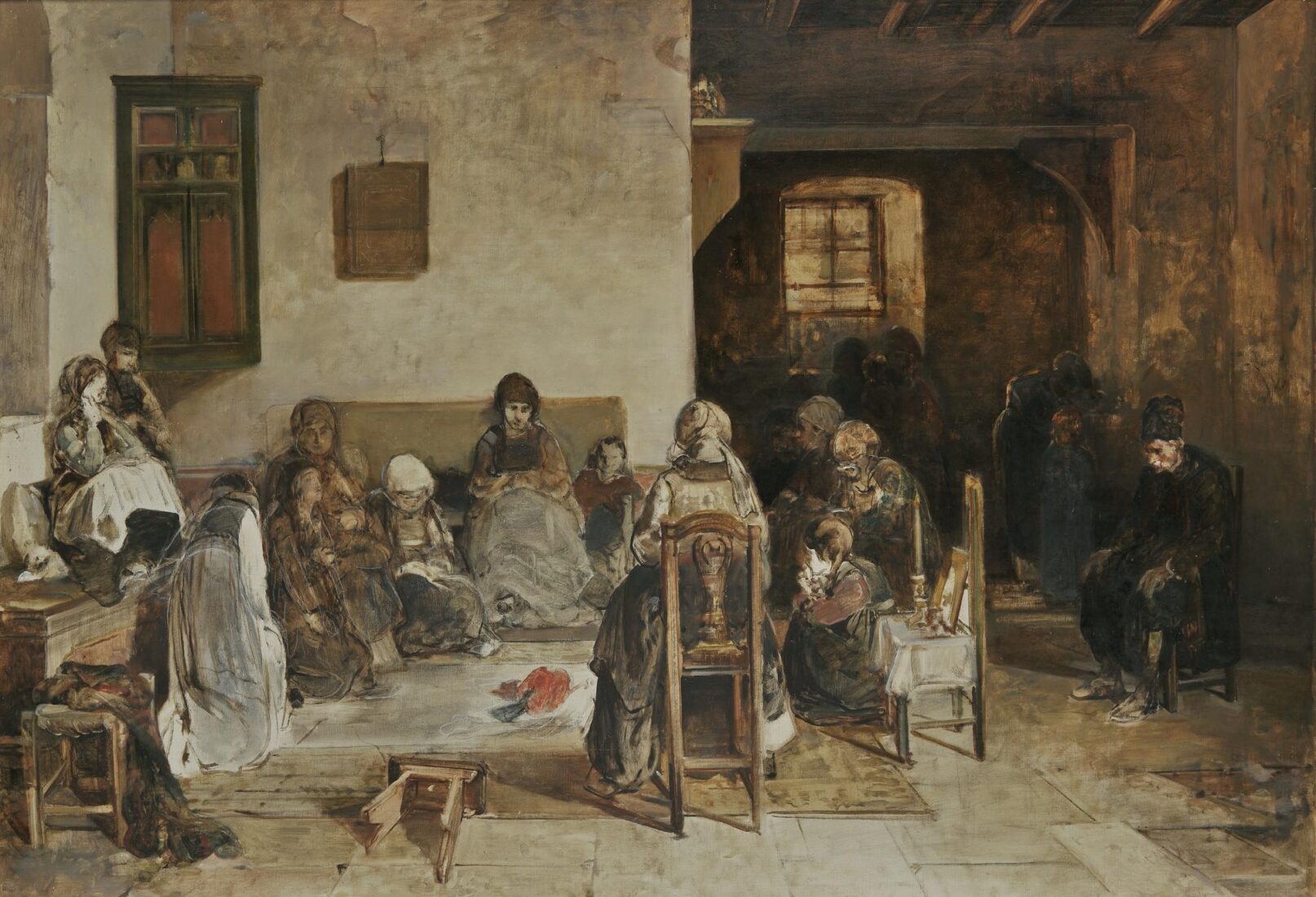
The subject of the painting is the dirge for a sailor lost at sea. In an island house, women and children are wailing, seated around a red cap, all that is left of the lost sailor. The tragic figure of the father is seated on the far right, face down. An impromptu iconostasis has been set up on a chair on the right. The stool, thrown on the floor, symbolises the absence of the lost sailor. The scene is full of drama. Rendered in simplified brushwork and diluted paint, it proves the great artist’s skill in drawing, composition and expression.
